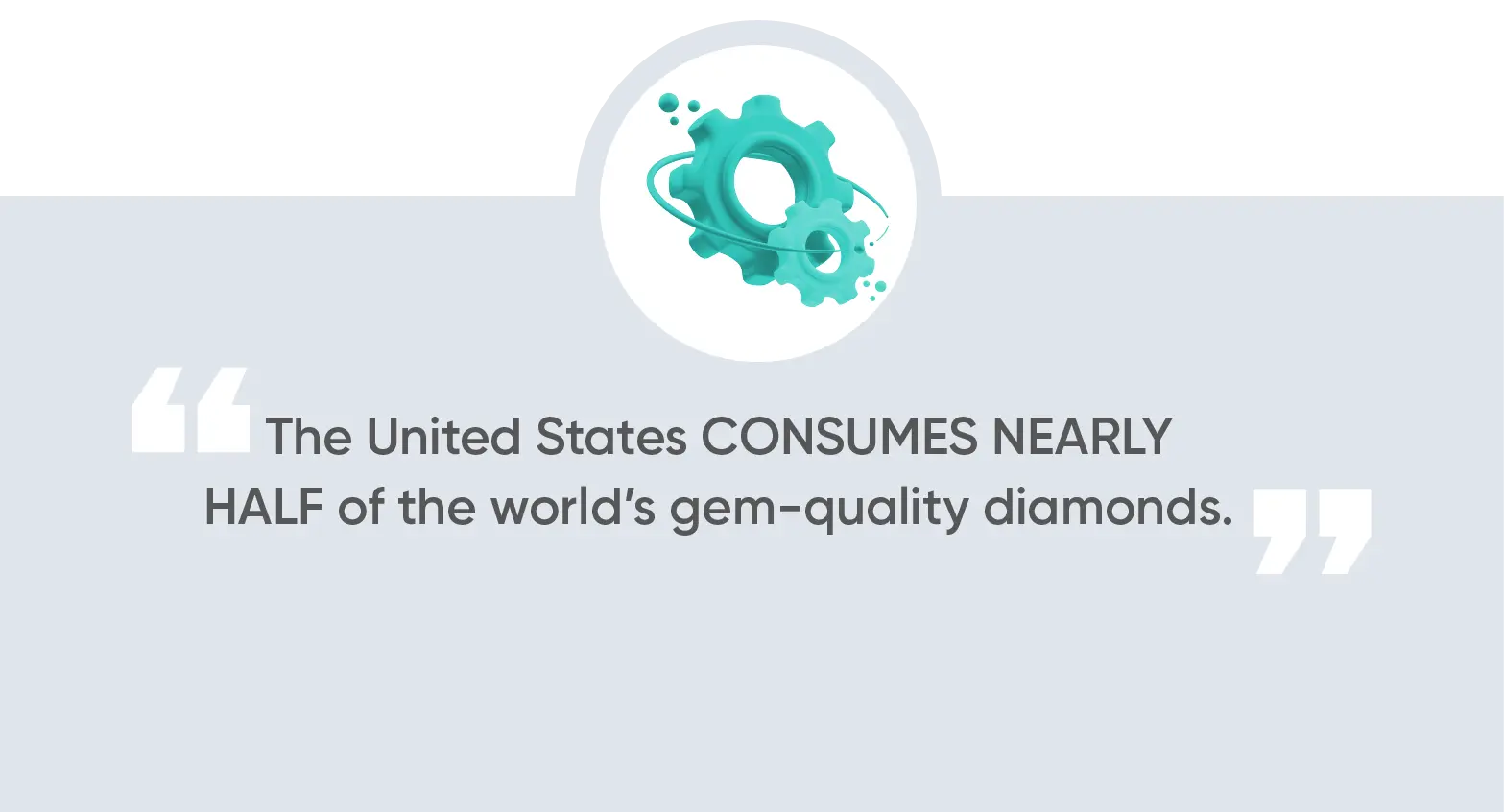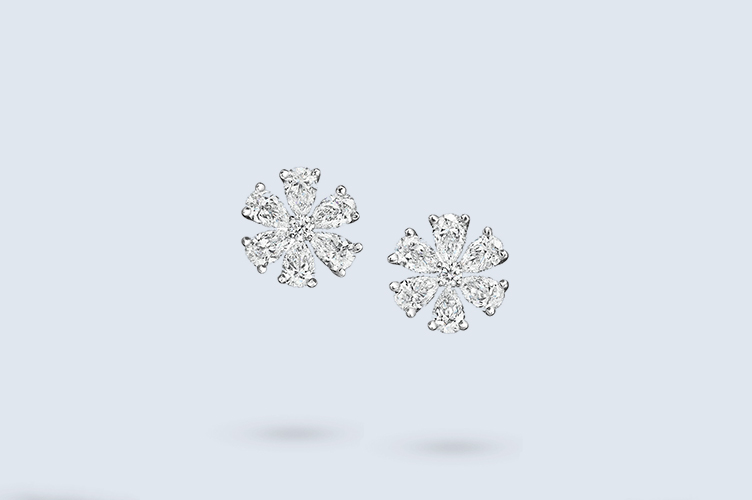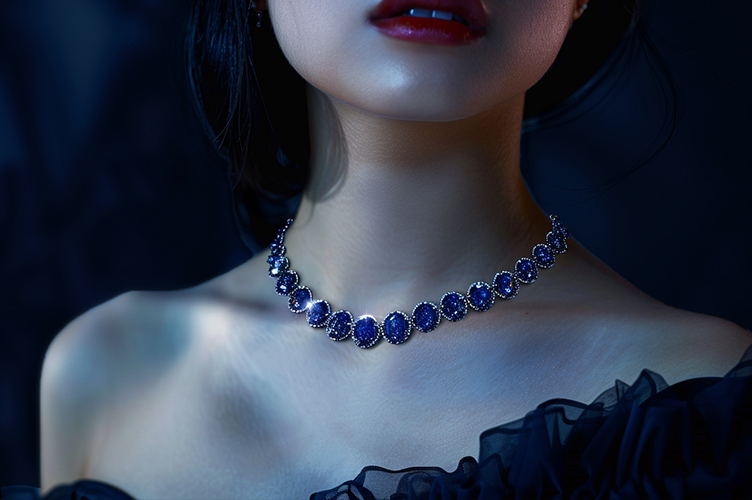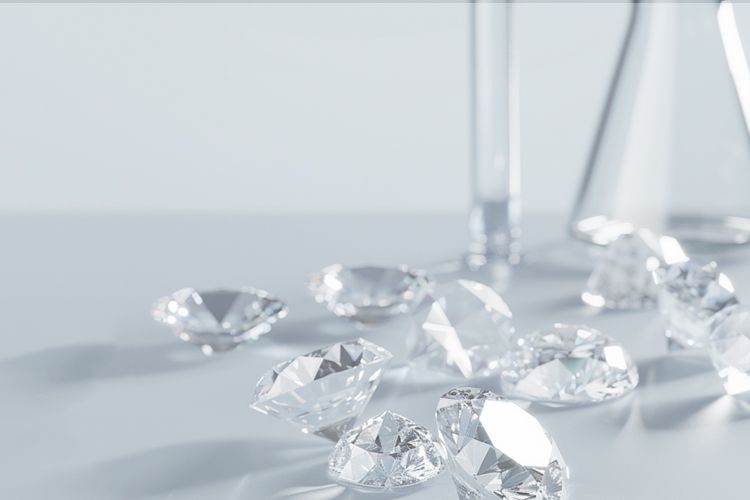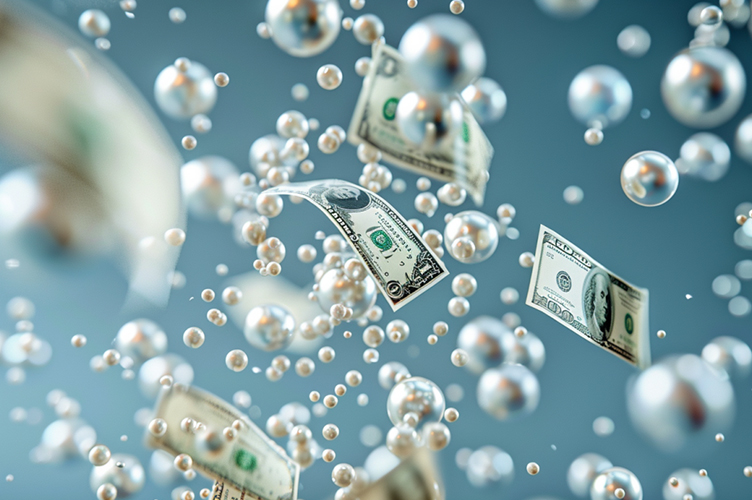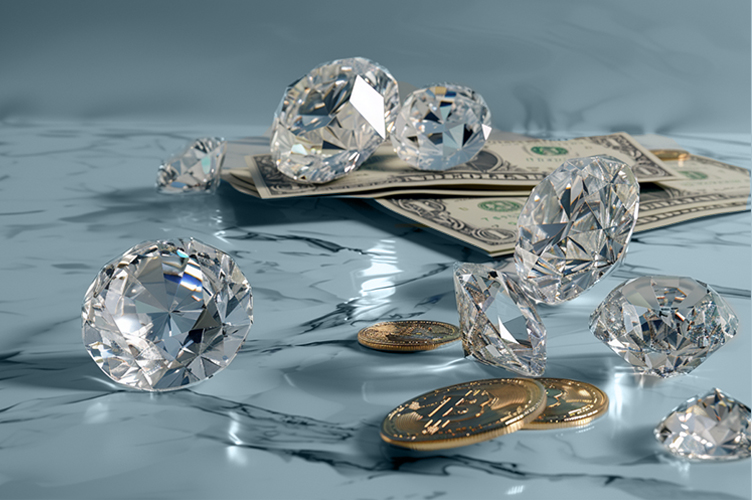What do you really know about diamonds? If you’re like most people, you could probably list off a few things.
- Diamonds are the hardest natural substance on Earth
- There are both natural diamonds and lab created diamonds
- Natural diamonds form in the Earth’s mantle
And that’s maybe it.
However, it’s time to brush up on your diamond know-how because it is more than just a sparkly rock. Here are 8 interesting diamond facts you need to know now.
What You Will Learn
- 1. The Largest Rough Diamond Ever Found Only Weighed About a Pound
- 2. The Word Diamond Means “Unbreakable”
- 3. Diamonds aren’t the Hardest Substance on Earth
- 4. Diamonds are Found Nearly Everywhere on Earth
- 5. The United States is the World's Largest Diamond Market
- 6. Diamond Shopping is Changing
- 7. You Can Turn a Lot of Weird Things into Diamonds
- 8. A Diamond is Worth Protecting
- Diamonds Fun Facts FAQs
- Need More Diamond Facts?
1. The Largest Rough Diamond Ever Found Only Weighed About a Pound
When you think of a giant diamond, like the biggest diamond ever found, how much do you imagine it weighs? Do you imagine some huge rock you have to hold with two hands because it’s so massively heavy?
Well, that’s not realistic. The largest rough diamond ever found was the Cullinan diamond, discovered in 1905. The diamond weighed 3,106 carats, and while that seems like a lot at first, consider that a carat is equivalent to just 0.200 grams. That means 3,106 carats equals about 1.3 pounds plus a little extra.
That’s right, the largest diamond ever found only weighed about a pound — about the same as two potatoes.
Where is the Cullinan diamond now? After the discovery in South Africa, it was presented as a gift to King Edward VII of the United Kingdom, who had the Cullinan split into nine large diamonds (and nearly 100 smaller diamonds). Of these, two diamonds are now part of the British crown jewels.
Suggested Read: Types of Rough Diamonds | BriteCo Jewelry Insurance
2. The Word Diamond Means “Unbreakable”
According to the online etymology dictionary, the word diamond derives from an ancient Greek word “adamas,” meaning indestructible.
This Greek word referred to a hypothetical material that was the hardest material available, with the word meaning the same as “unbreakable” or “inflexible.” The word “adamant” can also be connected to this, i.e., “being insistent or unshakeable.”
This namesake is highly fitting because diamonds are the hardest natural substance on Earth’s surface.
3. Diamonds aren’t the Hardest Substance on Earth
Yes, we just said that diamonds are the hardest natural substance on Earth. However, they’re not the hardest substance on Earth overall, or even overall outside of Earth.
Instead, other discovered, harder substances include lonsdaleite, a meteorite-derived substance, and wurtzite boron nitride, a lab-created synthetic nanomaterial.
4. Diamonds are Found Nearly Everywhere on Earth
When you think of mined diamonds, you likely connect them to regions where diamond mines and their practices are in the current spotlight and where historically large diamonds have been found, such as in Africa and Australia. However, don’t make the mistake of thinking that today’s diamond hot spots have always and forever been the world’s sources for all things precious stones.
Before the 1700s, almost all the world’s diamonds came exclusively from India. From there, the world focused on diamond mining in South America, particularly Brazil, in the early 1700s. A century later, diamonds were found in North America (today, North America produces nearly 10% of the world’s diamonds by volume). Even later, diamonds were finally discovered in Africa, prompting a heavy influx of diamond mining in the mid-1800s.
However, as recently as the 2010s, Russia produced the most diamonds by volume and value.
5. The United States is the World's Largest Diamond Market
It’s likely no secret that the diamond market in the United States is a big one. The United States consumes nearly half of the world’s gem-quality diamonds. Whether you’re shopping for a diamond engagement ring, a diamond tennis bracelet, or a diamond-encrusted timepiece, you’re not alone in your love for a natural diamond.
6. Diamond Shopping is Changing
Just like diamond sourcing has changed over the centuries and decades, so has diamond shopping. Each year, the De Beers Group releases a report with facts about diamond shopping trends front and center.
So what are the current trends? Most recently, the report found that “36% of women overall and 39% of Gen Z specifically seek information on brands’ ethical credentials when buying diamond jewelry.” Speaking of brands, branded diamond jewelry accounted for about 66% of diamond sales in recent history; branded jewelry was specifically most popular with Gen Z buyers. Online diamond shopping is becoming more popular, too.
7. You Can Turn a Lot of Weird Things into Diamonds
Diamonds are made from carbon. Carbon is everywhere. It makes sense, then, that you could turn many different things into a diamond with a little effort — but that doesn’t change the fact that it’s just weird.
For example, did you know you can turn peanut butter into a diamond? A German scientist discovered that you get a diamond if you subject peanut butter to high pressure and heat. Other scientists found that you can recycle plastic into nanodiamonds. One Swiss company will even turn your loved one’s ashes into a diamond. The company extracts purified carbon from the ashes, crystallizes it, and produces a diamond over several weeks or months.
8. A Diamond is Worth Protecting
And last up in our facts on diamonds? A diamond is always worth protecting.
Whether you’ve invested in a treasured piece of jewelry, or you just own a much-loved family heirloom or a piece with significant sentimental value, ensure that the diamond is protected in the event of damage, theft, disaster, and other unforeseeable events.
With comprehensive jewelry insurance from BriteCo, your jewelry is protected under an array of circumstances (including under conditions that your homeowners’ or renters’ insurance won’t cover). Learn more about how we can keep your most prized possessions safe from harm, and get your free and easy quote today.
Diamonds Fun Facts FAQs
Where Did the World’s Diamonds Come From?
Diamonds formed billions of years ago, beneath the Earth’s surface, under high temperatures and extreme pressure. As carbon atoms crystallized, they created diamonds. Then, later, volcanic activity pushed these diamonds up toward the Earth’s surface, where they could be discovered.
Can Only a Diamond Scratch Another Diamond?
Yes! However, diamonds are very difficult to scratch — unless you have another diamond, so it’s imperative to store diamond jewelry separately to avoid inadvertent brushing, rubbing, or scratching — diamonds are at risk of breaking or shattering under the right circumstances.
When Did Humans Start Wearing Diamonds?
History shows that diamonds were collected and used in India before the common era. Eventually, international trade routes took diamonds to Europe, where they became fashionable in the 1400s.
Suggested Reads: How Much Are Diamonds Worth? | BriteCo Jewelry Insurance
Need More Diamond Facts?
Check out our handy sources for further reading and more info about diamonds (and don’t forget to visit the BriteCo blog for diamond interesting facts like these, plus everything else you could need to know about shopping for and caring for jewelry).
- https://www.gia.edu/gia-news-research-diamond-fun-facts
- https://pursuit.unimelb.edu.au/articles/diamonds-the-hard-facts
- https://4cs.gia.edu/en-us/blog/famous-diamonds-cullinan-ii/
- https://4cs.gia.edu/en-us/where-diamonds-come-from
- https://www.gia.edu/diamond-history-lore
Also Check:





